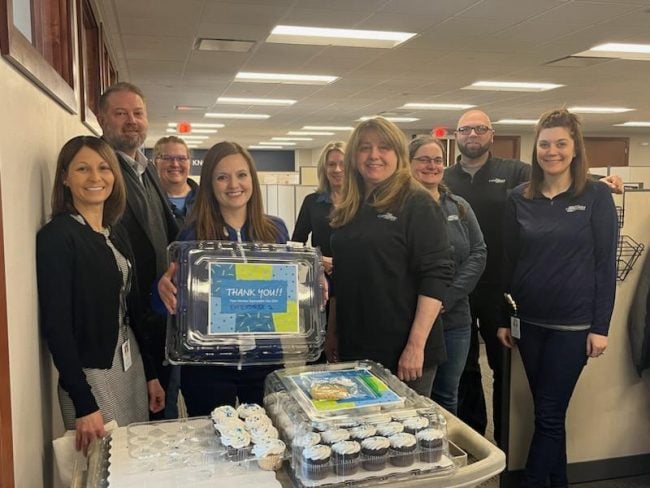Credit unions across the land have learned to live with therazor-thin margin between savings and lending rates by nurturingsources of noninterest income. Sure, everyone in credit union landknows that.
|But did you know that it's not all fee income? Not even close.In fact, fee income as a percentage of average assets has basicallyheld steady for more than 15 years. It was 0.64% among all U.S.credit unions in 1999, spiked to 0.88% during the recession in 2008and settled back to 0.66% in 2015.
|However, other operating income was only 0.26% of average assetsas the new millennium dawned. It's grown steadily to 0.69% lastyear, according to our analysis here at Callahan &Associates.
|Taken together, we found that NII – fee income plus otheroperating income as a percentage of average assets – was 0.9% in1999 and last year it was 1.35%, also steadily ascending over thepast 16 years.
|Traditionally, financial institutions focused on fees to drivenoninterest income. Fee income includes account-related charges,such as late fees, overdraft fees and monthly account servicecharges. Over time, the focus has shifted for a variety of reasonsincluding consumer protections, member demand and increasedcompetition in the marketplace.
|Now other operating income has become a greater piece of thenoninterest income pie, expanding as products, services and memberbehavior evolve. For instance, more members are making creditunions their primary financial institution, which has pusheddeposits and checking account activity to record numbers. As thosemember relationships deepen, interchange income is rising at creditunions.
|Add to that insurance, investments and the like, and the impacton the bottom line is striking. The average ROA of all creditunions in 1999 was 0.92%. Without fees and other NII, make that0.02%. Last year? The average ROA of 0.77% flips to red ink, at-0.58%.
|Indeed, we found in a survey of credit union NII best practiceswe did at Callahan & Associates earlier this year that today'ssuccessful member-owned financial cooperatives use a variety ofvalue-added products and services to achieve NII happiness.
|We see those as maturing financial institutions, surviving andthriving by helping their members make their future more secure inthese uncertain times. That goes well beyond share insurance toinclude life insurance, health insurance and even insurance for thegap between what a member owes on a car and what it's worth. Theyand their members also are profiting from real estate andinvestment services that are delivered with the credit unionphilosophy in mind.
|Here are some other findings from our survey and deep dives intothe 5300 call report data we get each quarter from the NCUA:
|State of Credit Union Revenue Generation
Nationwide, NII reached $16 billion in 2015, making up 29% oftotal income at credit unions.
NII as a percentage of average assets stood at 1.35% in 2015, uptwo basis points from 2014.
On a per member basis, NII grew 4.7 percentage points to reach$150.50 in 2015, compared to negative 3.4% growth in 2014.
NII Reliance Continues to Grow
As time passes, credit unions rely more heavily on NII to ensuresustainability.
Operating expenses are putting pressure on credit union profits.For instance, operating expenses including salaries, facilities,compliance and technology grew 6.7% in 2015, totaling $36.7billion.
Return on assets is also facing downward pressure, in part, dueto banking and fintech competition. As of 2015, ROA declined fivebasis points year-over-year to reach 0.77%.
Key Findings From the NII Survey
Total card-related interchange and fee income accounted for42.3% of total NII in 2015.
Income from mortgage sales, servicing rights and real estatelending tied credit card interchange and fees for the third-largestcomponent of noninterest income, making up 12% of total noninterestincome in 2015.
More than three-fourths (80%) of survey respondents offer creditand prepaid card rewards to roughly one-third (34.1%) that offerdebit card rewards.
Blending Interest With Noninterest Income
Record-breaking lending nationwide means that credit unions cannow offer supplemental services, such as auto insurance, to theirmembers, which ultimately creates a win-win scenario.
Each credit union has to decide its own path to NII success. Wehope this information helps inform yours.
|
Michelle Parker is senior analyst for Callahan& Associates. She can be reached at 202-223-3920or [email protected].
Complete your profile to continue reading and get FREE access to CUTimes.com, part of your ALM digital membership.
Your access to unlimited CUTimes.com content isn’t changing.
Once you are an ALM digital member, you’ll receive:
- Critical CUTimes.com information including comprehensive product and service provider listings via the Marketplace Directory, CU Careers, resources from industry leaders, webcasts, and breaking news, analysis and more with our informative Newsletters.
- Exclusive discounts on ALM and CU Times events.
- Access to other award-winning ALM websites including Law.com and GlobeSt.com.
Already have an account? Sign In
© 2024 ALM Global, LLC, All Rights Reserved. Request academic re-use from www.copyright.com. All other uses, submit a request to [email protected]. For more information visit Asset & Logo Licensing.









